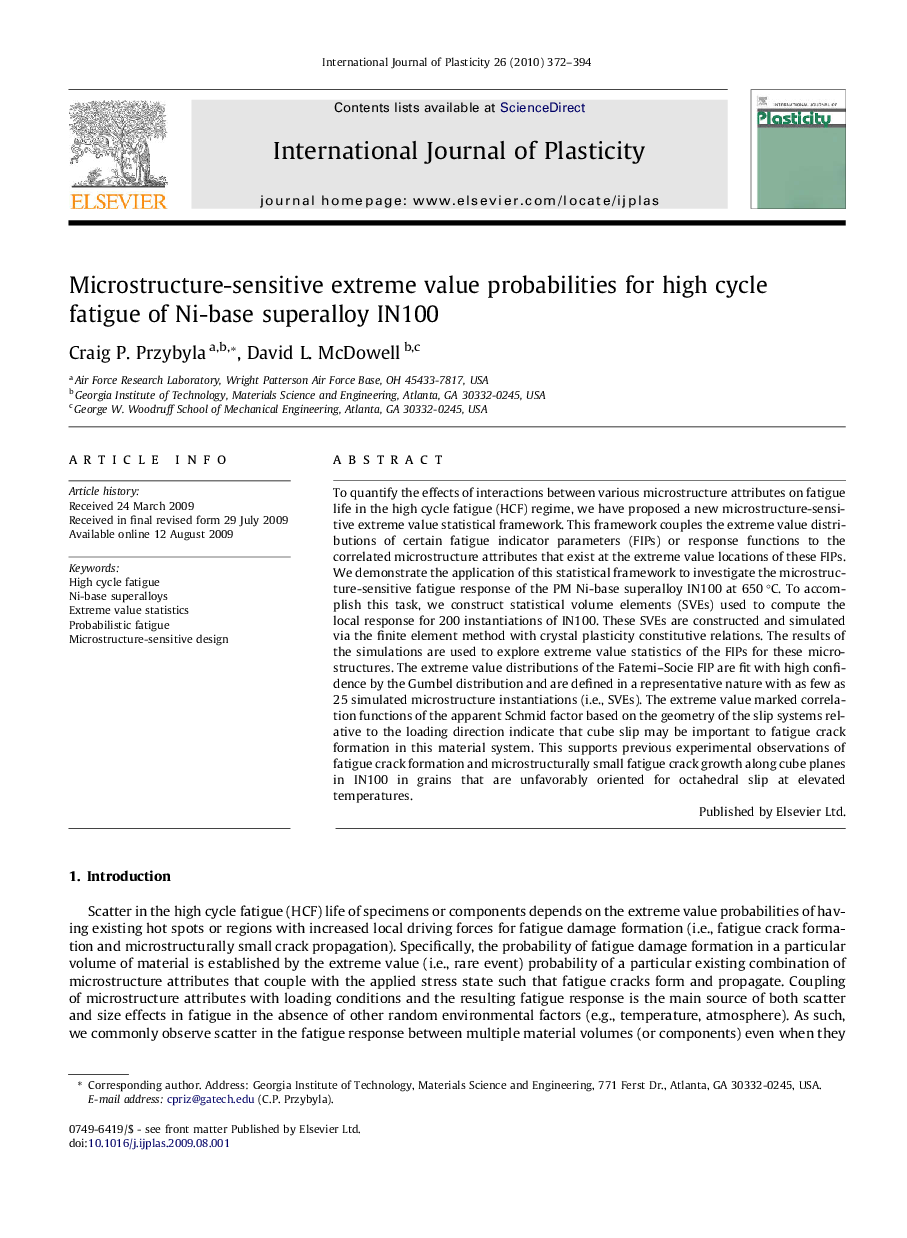| Article ID | Journal | Published Year | Pages | File Type |
|---|---|---|---|---|
| 786537 | International Journal of Plasticity | 2010 | 23 Pages |
To quantify the effects of interactions between various microstructure attributes on fatigue life in the high cycle fatigue (HCF) regime, we have proposed a new microstructure-sensitive extreme value statistical framework. This framework couples the extreme value distributions of certain fatigue indicator parameters (FIPs) or response functions to the correlated microstructure attributes that exist at the extreme value locations of these FIPs. We demonstrate the application of this statistical framework to investigate the microstructure-sensitive fatigue response of the PM Ni-base superalloy IN100 at 650 °C. To accomplish this task, we construct statistical volume elements (SVEs) used to compute the local response for 200 instantiations of IN100. These SVEs are constructed and simulated via the finite element method with crystal plasticity constitutive relations. The results of the simulations are used to explore extreme value statistics of the FIPs for these microstructures. The extreme value distributions of the Fatemi–Socie FIP are fit with high confidence by the Gumbel distribution and are defined in a representative nature with as few as 25 simulated microstructure instantiations (i.e., SVEs). The extreme value marked correlation functions of the apparent Schmid factor based on the geometry of the slip systems relative to the loading direction indicate that cube slip may be important to fatigue crack formation in this material system. This supports previous experimental observations of fatigue crack formation and microstructurally small fatigue crack growth along cube planes in IN100 in grains that are unfavorably oriented for octahedral slip at elevated temperatures.
